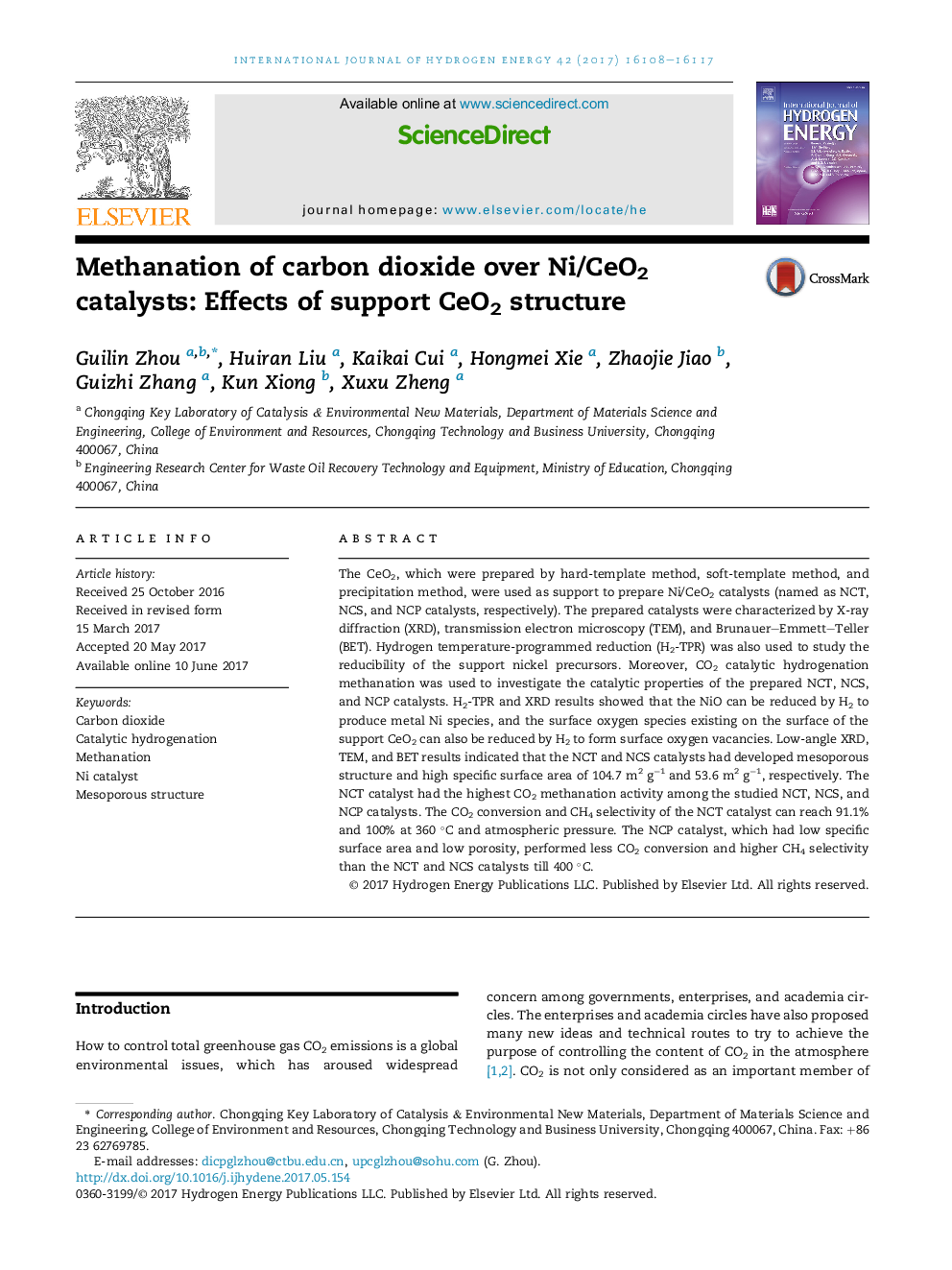| Article ID | Journal | Published Year | Pages | File Type |
|---|---|---|---|---|
| 5147357 | International Journal of Hydrogen Energy | 2017 | 10 Pages |
Abstract
The CeO2, which were prepared by hard-template method, soft-template method, and precipitation method, were used as support to prepare Ni/CeO2 catalysts (named as NCT, NCS, and NCP catalysts, respectively). The prepared catalysts were characterized by X-ray diffraction (XRD), transmission electron microscopy (TEM), and Brunauer-Emmett-Teller (BET). Hydrogen temperature-programmed reduction (H2-TPR) was also used to study the reducibility of the support nickel precursors. Moreover, CO2 catalytic hydrogenation methanation was used to investigate the catalytic properties of the prepared NCT, NCS, and NCP catalysts. H2-TPR and XRD results showed that the NiO can be reduced by H2 to produce metal Ni species, and the surface oxygen species existing on the surface of the support CeO2 can also be reduced by H2 to form surface oxygen vacancies. Low-angle XRD, TEM, and BET results indicated that the NCT and NCS catalysts had developed mesoporous structure and high specific surface area of 104.7 m2 gâ1 and 53.6 m2 gâ1, respectively. The NCT catalyst had the highest CO2 methanation activity among the studied NCT, NCS, and NCP catalysts. The CO2 conversion and CH4 selectivity of the NCT catalyst can reach 91.1% and 100% at 360 °C and atmospheric pressure. The NCP catalyst, which had low specific surface area and low porosity, performed less CO2 conversion and higher CH4 selectivity than the NCT and NCS catalysts till 400 °C.
Related Topics
Physical Sciences and Engineering
Chemistry
Electrochemistry
Authors
Guilin Zhou, Huiran Liu, Kaikai Cui, Hongmei Xie, Zhaojie Jiao, Guizhi Zhang, Kun Xiong, Xuxu Zheng,
